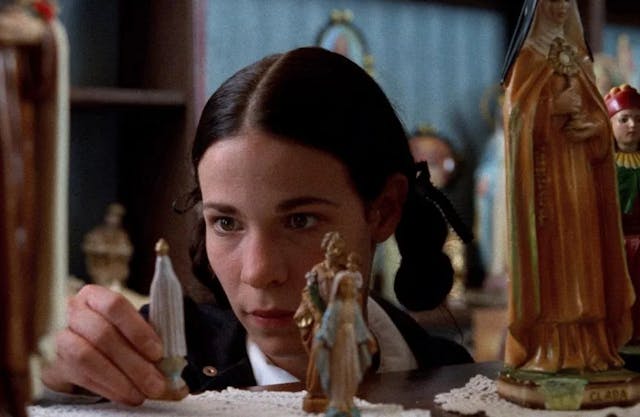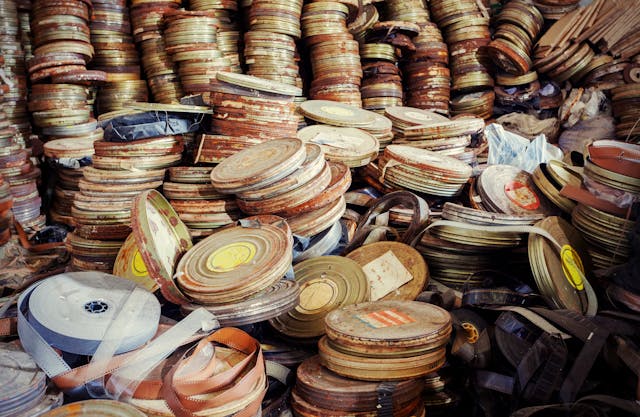Your Movie is Done, Now What?: All You Need to Know About Indie Film Distribution

You shot a great indie movie! Now, how are you going to reach the public? / Photo by © Ppengcreative, courtesy of Dreamstime.
You made it. Your first movie is ready. The final edit is locked down. The editor - OK, you - exported the DCP. You have 75-plus minutes of pure cinematic goodness ready to be discovered by film buffs all over the world. They will see it and not know what hit them. You are the next Christopher Nolan or the next Great Gerwig. Or better yet, you are the next YOU, a hot new director who is ready to wow the crowds. But here’s the thing. First, you need to get people to watch your movie. And how do you get around to that?
Film Festivals
Yes. Film festivals remain the best way for new talent to get traction in the industry, especially if you don’t have representation yet. If you get accepted, it's a surefire way to attract independent film distribution companies. One would think that applying to the latest number possible would improve your chances of getting in, right? Well, no. Submission charges add up, so do your due diligence and analyze your options. Not all Film Festivals are the same. Pick and choose, according to the kind of film you made. Think of this as a redux of the college application process. Sure, you can shoot for the stars: Sundance, Toronto, Cannes, Berlin, and Locarno are the Ivy League of the film world. Regional and local festivals can be your “safety” choice. Even then, they can be very competitive. Check out our handy-dandy guide to how to get into a film festival.

Still Sweet!: Jon Gries, Jon Heder, and Efrén Ramirez celebrate the XX Anniversary of "Napoleon Dynamite" premiere at Sundance 2024. / Photo courtesy of Sundance Film Festival
If you don’t want to go through the drag of applying to Film Festivals one by one, you can use digital platforms like Filmfreeway, which facilitate the process. Bear in mind, while Filmfreeway claims to have a system to vet their “over 12,000 of the world’s best film festivals and contests,” some filmmakers have had less than stellar experiences with festivals they reached through the service. Check out the cautionary tales in this article by The Hollywood Reporter. Again, do your due diligence before signing for any film fest.
Film festivals bring in critics and civilian audiences, which can help to build word-of-mouth with reviews on media outlets and by good old-fashioned word of mouth. Awards are nice, too, but winning one is hard and does not guarantee distribution. “Slow,” directed by Marija Kavtaradze, had a stellar run at film festivals, winning the World Cinema Directing Award at the 2023 Sundance Film Festival. Lithuania submitted it as its candidate for the Best International Film Oscar. More than a year after premiering at Sundance, it remains undistributed in the US. Some might be lucky and fly by with “selected” and “in competition” titles.
Film Markets
Competition and awards get the most headlines, but the sausage is made at the film markets that thrive on the sideline. The good: you don’t submit your movie to a cadre of programmers with particular tastes that might not jive with your sensibility. You are not competing to enter. The bad: it can be expensive. If you want to book a booth at the Cannes Film Festival Market, the cheapest one will set you back 4,570 euros. And that’s just 97 square feet. Price goes up if you want more space or if you want to locate at the prime space in The Riviera. And you have to spend more to make promotional materials, press kits, posters, you know, the works. Oh! And travel expenses: airplane tickets, hotel, food. Festival time is high season pretty much everywhere, so have your checkbook ready. Or buff that credit card. This year's film market will take place from April 14 to 22, parallel to the Festival.

Marché du Film: Stars may shine on the red carpet, but the real action is at the Cannes Film Market. / Photo by Loic Thebaud, courtesy of Cannes Film Festival & Marché du Film.
Distributors and Buyers
Film festivals and markets are the prime territory for distributors and buyers. These two agents are not necessarily interchangeable. Buyers can be associated with a commercial entity - a streaming platform, a theater chain, or a distribution company -buy the rights to your work and then reach out to his or her established contacts. Film distributors can be independent companies or studio-affiliated. They can take many films at the same time. Distributors are the ones that place your movie in its ultimate delivery system: theater screens, a streaming service landing page, or the shelves of a brick-and-mortar store or an e-commerce warehouse - physical media forever! -.

"Adriaaane!": Streaming took "Rocky" offline? No worries, you have the Blu-Ray on your shelf. / Photo by © Petrajz, courtesy of Dreamstime.com
If you don’t go to film festivals and markets, how do you get the attention of buyers and distributors? Well, networking, networking, and networking. If it doesn’t work, keep networking. Reach out to fellow filmmakers and contacts in the industry with whom you have a relationship. It’s hard for cold calls to work. Attend industry events whenever possible and build up trust. In time, it might help. Better yet, don't wait for your movie to be ready. Let people know you.
Self-Distribution
Hit the Big Screen
Can I self-distribute my movie? It worked for Taylor Swift, right? Swift reached out to studios to find partners to make a concert movie of The Eras Tour, but none offered the terms she wanted. Jumping over the middleman, she produced the movie on her own and secured distribution going straight to AMC. Just like that, she turned into a studio and production company.
But the concert movie “Taylor Swift: The Eras Tour” (Sam Wrench, 2023) had distinctive advantages: brand recognition and a large, large base of fans ready to buy movie tickets. Swift’s sold-out world tour ended up being a sort of advertisement for the cinema experience, which had a wider market. More people can afford a movie ticket than a prime concert ticket. Also, venue infrastructure defines built-in scarcity. Only so many people can fit in those arenas in one-night-only engagements. Theaters can add more screens and shows to respond to high demand.
If you want to put your movie in theaters quickly, you can do four-walling. Basically, renting out the theater and paying in advance for every seat. It sounds easy, but it can be expensive. You have to take on promotion duties and ticket sales. Even more risky, you are basically competing with every other movie playing in the theater if it’s a multiplex. A better option is to reach out directly to indie theaters. You can negotiate how to split ticket sales, promotional campaigns, and length of engagement.
Stream and Chill
Online self-distribution is less risky. Once upon a time, you could do this via YouTube and Amazon Video, but the tech giants decided to destroy this democratic paradise and turn it into the digital version of a multiplex. Sure, you can upload your movie to your YouTube channel and get some revenue from their advertising, but you need to get millions of views to make it worth your while. If you want to offer your movie for rental, ad-free, just like the big studios…well, you will have to reach AppleTV+, Amazon Video, YouTube, and Google Video programmers through their trusted distributors and buyers.
Luckily, other platforms still allow direct sales and rentals. Vimeo on Demand is perhaps the most robust and popular. You can do this from your Vimeo channel or host the video on your website, inserting their HTML5 video player into your page.
Vimeo belongs to the magical world of OTT platforms. The three letters stand for “Over The Top.” No, it’s not the 1985 Sylvester Stallone movie about a truck driver who also happens to be a brilliant arm-wrestling champion.
When they say “over the top,” they refer to content shared over the internet and on assorted devices. That means you can have a presence on Roku, Smart TVs, and others. Check the small print to see the cut Vimeo and its pairs take. This is a fantastic solution, but like four-walling, you take on the responsibility of advertising and creating awareness of your work. The word “viral” is thrown around a lot, but as more content becomes available for consumption, it’s harder to get the public's attention. If your movie becomes viral, it’s like lightning striking or winning the lotto.
Join the Aggregation Revolution
Aggregators are popular for many reasons. They offer a hands-off approach and have relationships with big names in streaming, like Tubi, Amazon Video, and others. Netflix is not picking up your calls? Perhaps ODMedia can open that gate for you. The downside is that you have no guarantee that your project will necessarily get the star treatment.

Straight to Los Gatos, California: The right aggregator may be the gate that will open Netflix for your movie. / Photo by © Wellesenterprises, courtesy of Dreamstime.com
A single aggregator can place your movie on several platforms at a time, increasing your potential audience. However, each aggregator has its own conditions, so you have to read the contracts very carefully. Some require an upfront fee to take on your fee. There is no standard formula for splitting any income generated by rentals or sales. Some amass large libraries of content. Your movie may get lost amid the abundance.
When is an aggregator a good option? If you get the star treatment and a golden ticket to Netflix, well, yes. It’s a no-brainer. If not, again, check the small print on the contract to decide what works best for you. Think at which stage of your project’s commercial life cycle you are. These platforms are a good option when your movie has run its course through the distribution chain. It may not be in your best interest to cannibalize theatrical sales or cable licensing. Finally, aggregators are a good choice when the format you worked on is not easily sold. Short films are rarely screened in commercial theaters, for example - with the honorable exception of shorts before Disney animated feature films. Do they still put those on?
But I digress. In the end, aggregators are another middleman between you and viewers. This is neither good or bad, it’s just the way the system works. The most popular are ODmedia, Filmhub, Bitmax, and many others. Take your pick. Do your due diligence. The movie is done, but the work is not over.
Watch “Lonely”
“Lonely” is a powerful reminder that no one is ever truly alone, and there is always someone out there who cares and wants to help.
Stream NowWant to get an email when we publish new content?
Subscribe today




























